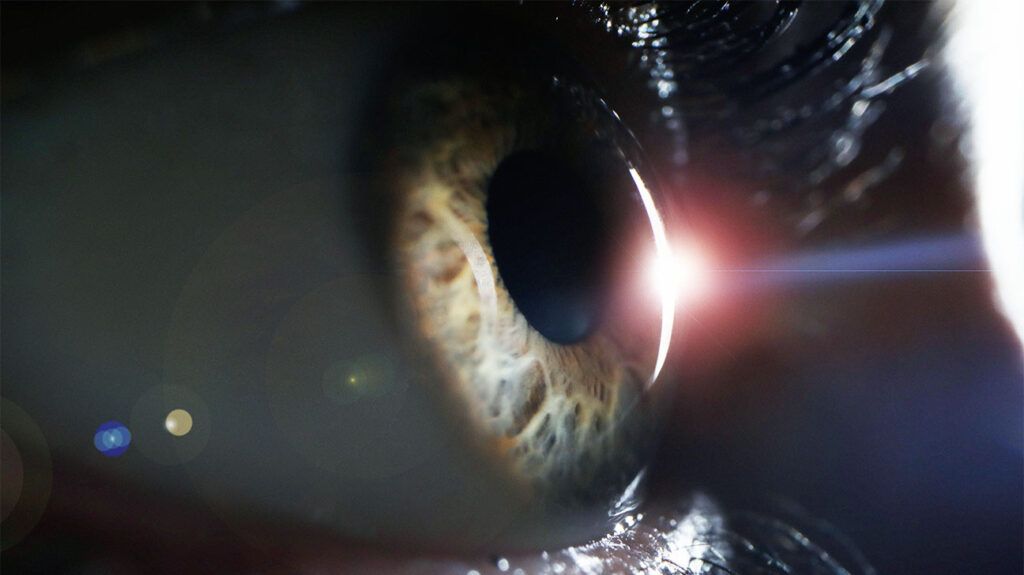Following laser surgery (photocoagulation) to repair a retinal tear, a person can expect a fairly brief recovery period with minimal discomfort. Temporary symptoms may include mild irritation and blurred vision.
During laser surgery, an ophthalmologist directs a high intensity laser beam at the torn retina, creating minor burns that seal the tear with scar tissue, prevent fluid leakage, and secure the retina to prevent detachment.
After surgery, the doctor will talk with the person about medications to manage swelling and pain. They will also explain when the person can resume certain activities, such as driving.
This article explains what to expect after laser surgery for a retinal tear, including tips for recovery, potential complications, and when to contact a doctor.

Laser surgery is a standard and highly effective treatment for retinal tears, with some research highlighting success rates exceeding
The entire procedure typically takes fewer than 15 minutes and does not require a hospital stay. An ophthalmologist can perform it in their office.
Following surgery, a person may experience symptoms such as:
- blurred vision
- floaters
- flashing lights
- pain that lasts a few hours
Their doctor may recommend over-the-counter (OTC) pain medication and prescribe eye drops to prevent swelling. People may also need to wear an eye patch and avoid certain activities, such as driving and exercise, until their eye heals.
A
Learn about treatment options for retinal tears.
Typically, recovery from laser surgery for a retinal tear is brief, allowing the person to resume their usual activities within a few weeks, depending on the severity of the tear.
However, a person may experience some discomfort or pain shortly after the surgery. Common temporary symptoms include blurred vision and seeing flashing lights, which may last a few weeks.
The quick recovery is due to the minimally invasive nature of the procedure, which involves creating minor burns to seal the tear with scar tissue, preventing fluid leakage and securing the retina.
Adhering to the doctor’s postoperative instructions, such as avoiding strenuous activities and taking prescribed medications, helps ensure a smooth and swift recovery.
With proper care, people can quickly return to their usual routines with improved vision stability.
Like all surgeries, laser surgery for a retinal tear carries risks. A person’s doctor will explain these potential complications before the procedure to help them weigh the risks and benefits.
Some potential risks of laser surgery include:
- bleeding in the eye
- pressure in the eye, possibly leading to glaucoma
- cloudy vision (cataracts)
Additionally, it is possible the laser surgery will not correct the problem, and the person may need a second surgery or another type of surgery to prevent retinal detachment.
Learn more about the warning signs of retinal detachment.
Following postoperative care instructions helps ensure a smooth recovery. These instructions
- using special eye drops to prevent swelling
- resting and avoiding strenuous activities, such as vigorous exercise
- wearing a protective eye patch
A person’s doctor will advise them on how long they need to follow these instructions for and when they may resume activities such as exercise and driving.
It is advisable for someone to contact a doctor after laser surgery if they experience:
- persistent or severe pain that does not respond to OTC pain medication
- pressure in the eye
- sudden vision changes or significant loss of vision
- increased swelling or discharge from the eye
A person should immediately contact a doctor if they experience new or worsening floaters or flashing lights, as these
After laser surgery for a retinal tear, a person may expect a brief recovery with minimal discomfort. Common side effects include mild irritation and blurred vision.
More severe side effects, such as intense pain, pressure, or vision loss, could be signs of complications. For example, a sudden increase in flashing lights or floaters may indicate retinal detachment, which requires prompt treatment.
After surgery, the doctor will explain steps for pain management and tell a person when it is safe too resume activities such as driving. People will need to follow their doctor’s instructions to encourage a quick, smooth recovery.
